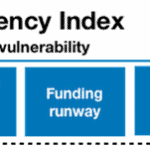What’s the Most Efficient Way to Deploy Mini-Grid Distribution Infrastructure?: A Study Assesses Different Approaches — And Finds a Clear Winner
Mini-grids have emerged as a viable technology to accelerate access to electricity in sub-Saharan Africa. However, for mini-grids to become sustainable and scalable commercially, profitability must improve. That’s why the Mini-Grid Innovation Lab, established by CrossBoundary Advisory and the Rockefeller Foundation in 2018, works with mini-grid developers to identify and test innovative prototypes that improve the business model.
As the prototypes generate results, the Lab shares evidence of their impact, and works closely with partners — developers, governments and funders — to scale these prototypes across participating developers and markets. So far, the Lab has tested 11 innovations with 27 developers in nine countries across 118 sites.
Considering how critical distribution infrastructure is to mini-grids, the Mini-Grid Innovation Lab commissioned a study, starting in 2020, that aimed to answer the question: What is the most efficient way to deploy a distribution grid? Specifically, is it more economical for operators to deploy reactively, following customer interest and financial commitment — which is currently the most common approach — or does a proactive deployment unlock more returns, with the expectation of attracting more customers?
Proactive installation (also known as “grid densification”) is defined as designing, building and installing at least some amount of distribution infrastructure prior to community members making any financial commitment. In the study, we examined two scenarios of grid densification:
- Network saturation, which includes the installation of all the overhead power distribution lines and customer connection accessories (like drop lines, smart meters and in-home wiring) required throughout a community; and
- Network expansion, which includes the installation of all the overhead distribution required throughout a community, with operators installing connection accessories only when a new customer joins the grid.
Here is what the Mini-Grid Innovation Lab found.
Grid Densification Lowers Costs per Connection
Proactively installing a mini-grid distribution network leads to up to 15% lower capital expenditures (capex) per connection and a 1.2% average increase in the internal rate of return (IRR).
Of the 15 sites where the Lab commissioned the grid densification study between 2020 and 2021, five sites tested network saturation and five other sites tested network expansion. The five remaining sites functioned as control sites, or “business-as-usual” sites, where developers continued with their existing approach of reactive installation of distribution lines and customer connections.
Our hypothesis going into the study was that due to the bulk approach grid densification sites take to distribution grid installation, they will require higher initial capex, but will also reap economies of scale that reduce the overall capex per connection. On the other hand, because business-as-usual sites take a piecemeal approach, they will require lower initial capex but will not reap economies of scale, leading to overall higher capex per connection.
Based on data collected from these sites, the average total cost per connection was highest for control sites, slightly lower for network expansion sites (1.4% lower than control sites), and substantially lower for network saturation sites (15% lower than control sites). These results demonstrate the significant benefits network saturation offers from a cost savings perspective, and show that the cost benefits for network expansion are marginal.
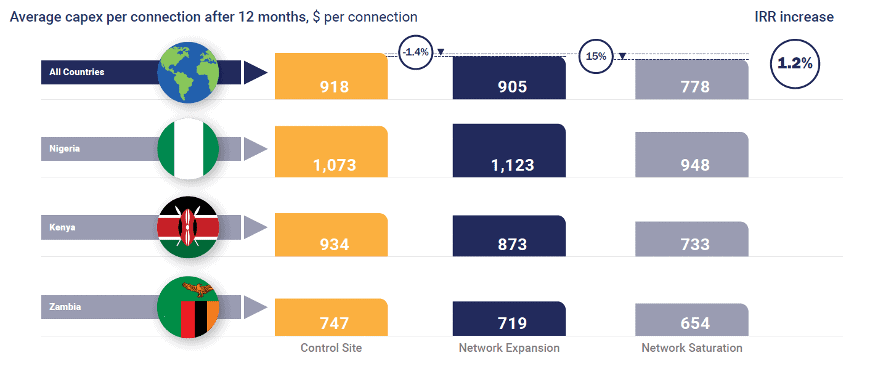
Note: The IRR increase quoted is based on the difference observed in the average capex per connection for network saturation compared to the control group. The penetration, or speed of connections, is not included, as the observed trends may not be sustained, and control sites may eventually catch up.
The unit savings realized as a result of grid densification are attributable to logistics, labor and the bulk purchase of materials, which help to minimize capex per connection. These savings are highest in saturation, translating to an average increase of 1.2% in IRR. They are realized to a lower extent in expansion, suggesting that network saturation is a more economically viable approach for developers to adopt on their mini-grid sites.
Grid densification results in faster customer acquisition and better site utilization
Coming into the study, we set out to test the impact of grid densification on the proportion of households that are connected in a mini-grid community (penetration), as penetration is vital to achieving universal energy access and the other elements of SDG 7.
Network saturation and expansion sites had higher community penetration, with over 80% of the community connected in less than a year, compared to control sites (~51% penetration by the end of year one). At the observed rates, saturation could help achieve SDG 7’s access targets up to 1.6 times faster than a business-as-usual approach.
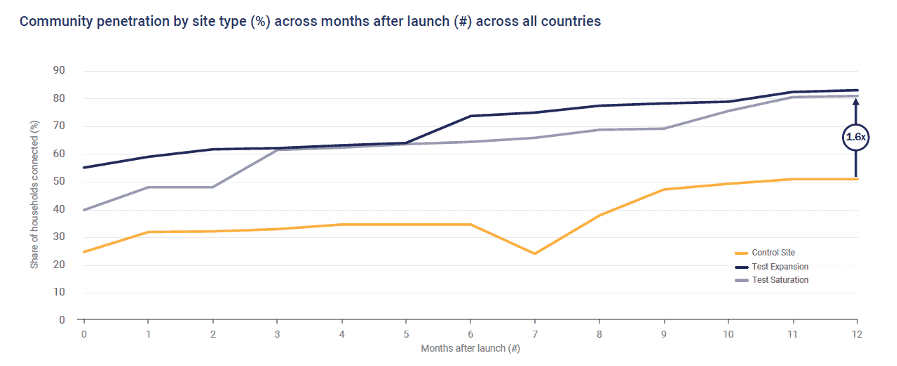
Note: Community penetration is defined as the number of households connected, divided by the total number of households identified and recorded in the community before prototype launch.
By making the distribution network available across entire sites, both the network saturation and expansion approaches signal developers’ willingness and capacity to connect new customers, which drives easier connections and faster and more expansive reach across the communities. In other words, the visual presence of overhead distribution lines in both grid densification scenarios demonstrates to potential customers that they have the option to get connected.
More customers also means more utilization, sooner. By connecting customers at a faster rate, grid densification leads to improved site utilization relative to the control sites. The average utilization at network saturation and expansion sites was ~27%, while the control sites had an average utilization of ~13% after one year — meaning grid densification sites had over double the utilization rate.
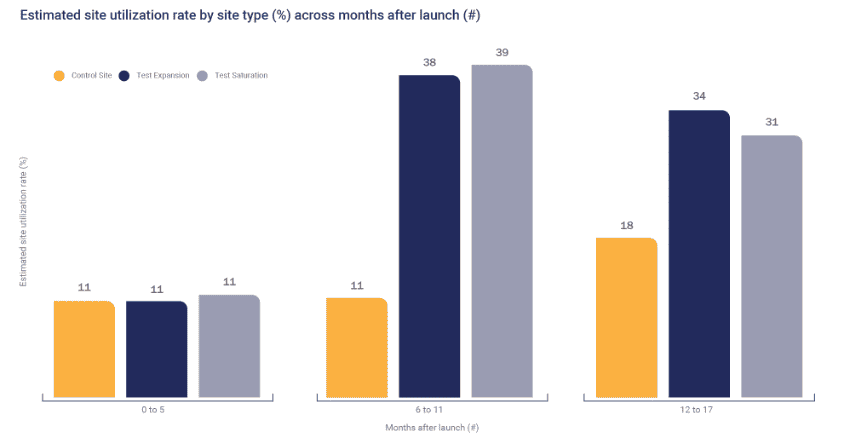
Note: Capacity utilization is defined as total electricity consumption divided by the expected generation (based on irradiation data) over the same time period.
Grid densification should be incorporated into mini-grid construction best practices
The strongest evidence so far for the benefits of grid densification is the fact that all five developers participating in this study have incorporated grid densification into their standard practice, considering its impact on cost, community penetration and customer satisfaction.
As one participating developer in West Africa said, “For all mini-grids we deploy, we construct the entire distribution network, customer drop lines and in-house wiring of customers’ premises at the same time during the construction phase of the project. We do that for the cost efficiency, enhanced customer satisfaction and improved site capacity utilization.”
It is important to emphasize that the findings presented here represent actionable intelligence rather than scientific evidence. These are preliminary results, and they may change as more data becomes available over time, from additional sites and other markets, or via alternative analytical approaches.
Despite its many benefits, network saturation may be challenging for smaller mini-grid operators to implement because of the higher initial capex requirement. As such, the Mini-Grid Innovation Lab is testing additional innovations that could help capture the benefits of network saturation while requiring even less upfront capex. Examples of the innovations that we plan to test in the near future are mesh grids and distributed mini-grids.
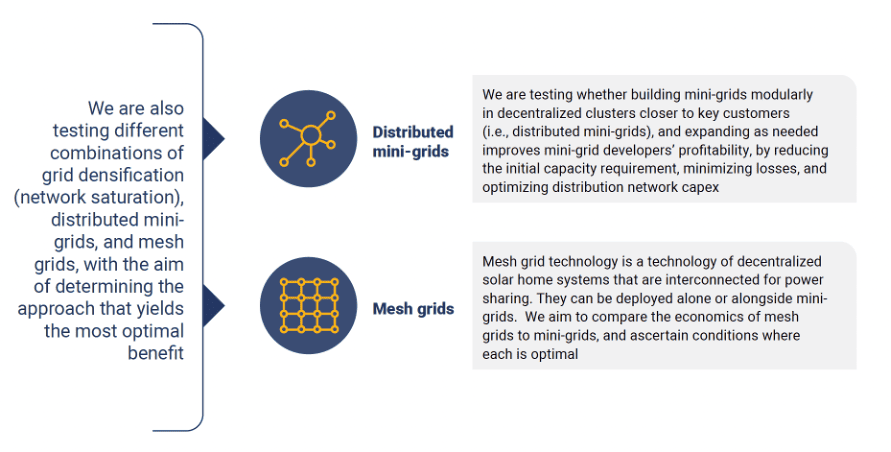
If you’re interested in learning more, the Mini-Grid Innovation Lab publishes results from the grid densification prototype and other innovations here. This study is part of our continued effort to test and scale different mini-grid innovations, so mini-grid developers, governments and funders can act on the results as they emerge.
The Lab is endorsed by the African Mini-Grid Developer Association (AMDA) and supported by the University of Massachusetts Amherst, Carnegie Mellon University and Duke University, who provide advice and support on experiment design, survey design and analysis of results.
Tombo Banda is the Innovation Lab Lead, Charles Sweetland is an Associate Principal who co-leads CrossBoundary’s Data Analytics team, and Faisal Olanipekun is an Innovation Lab Senior Associate at CrossBoundary.
Photo credit: Graham Savio, Conflict & Development at Texas A&M
- Categories
- Energy, Technology


